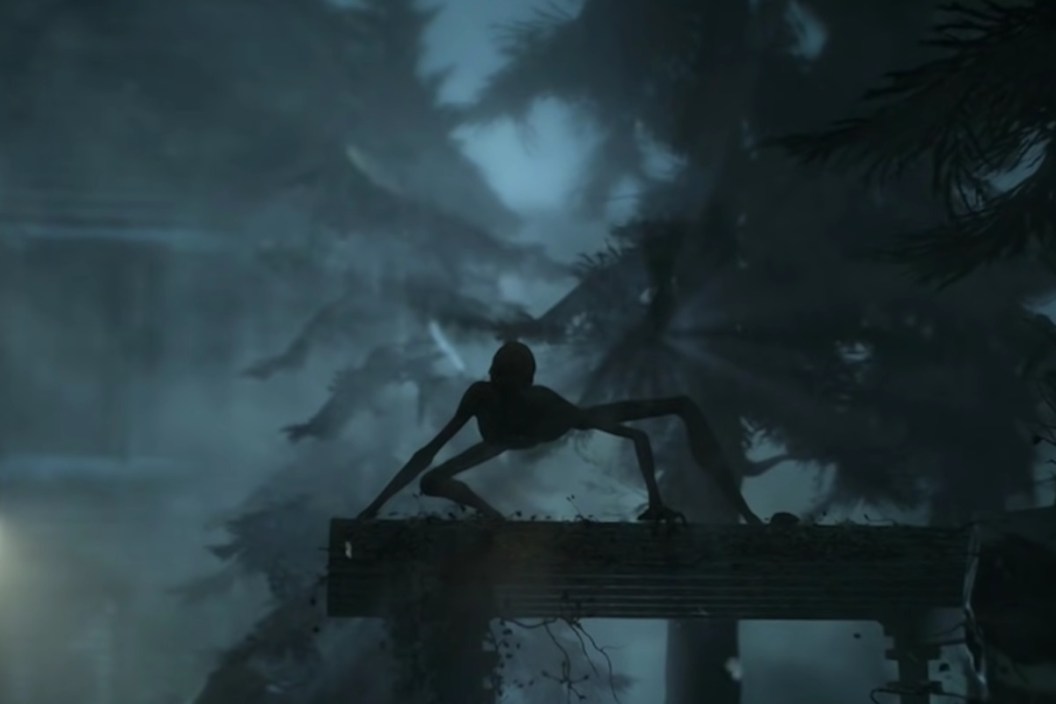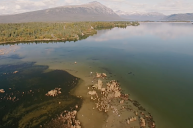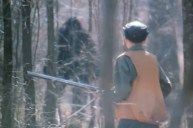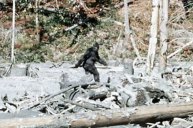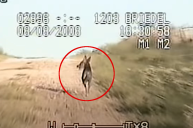Of all the creepy stories in Native American lore, the wendigo may top them all.
Who doesn't enjoy a good spooky story around a campfire in the woods late at night?
People have been telling scary stories while enjoying our planet's natural places for generations. It's almost a tradition to scare small children with these tales before heading off to bed. Imaginations then run wild as every sound in the forest reinforces the tale.
When it comes to spooky tales involving the wild areas of North America, Native American folklore and legend is filled with fantastic tales that are now a part of pop culture like the sasquatch.
However, there's one tale passed down by Native Americans that's way more terrifying than bigfoot. It's a spooky cautionary tale about the dangers of things like gluttony and greed. It involves cannibalism and an evil supernatural being of the forest that makes all depictions of sasquatch look rather tame by comparison.
We're talking about the legend of the wendigo. Tales of this humanoid creature abound in Native American legend in the northern continental United States and parts of Canada. It's a fascinating, if gruesome legend that's only just now starting to become part of popular culture.
What is the wendigo?
The tale of the wendigo is most often associated with Native American tribes in the Great Lakes region. According to Native-Languages.org, the four most common tribal affiliations are the Chippewa, Odawa, Potawatomi, and the Algonquins. The most common spelling of the name is "wendigo." However, you'll also see "windago," "weendigo," "windiga," and "the windigo."
The stories and descriptions of the creature are as varied as the names themselves, and it seems like each tribe's belief system has slightly different takes on the tale. Some tribes even have more than one interpretation.
Certain descriptions of the creature describe a type of ice giant or monster. More commonly, wendigos are often described as former human beings who were transformed into flesh-eating monsters due to the sins they committed in life. It's usually described as being emaciated with a nearly skeletal appearance due to the skin being so taught on the bones. Many describe eyes that are sunken back into the eye sockets. There seems to be a running theme of the beast having a somewhat corpse-like appearance.
In some stories, the bodies of these creatures are totally covered with ice or long hair. We should note that according to Back Story Radio, traditional Native American descriptions never described the beast as having antlers or horns, as has become almost the standard in pop culture these days.
The other running themes are of greed and gluttony. Many of the legends state humans who are greedy or who resort to cannibalism to survive are transformed into the wendigo. They are then forced to wander forever with an insatiable appetite for human flesh. No matter how much they eat, they are always starving.
Speaking of eating, sometimes there's an aspect to the story where the wendigo grows larger every time it successfully captures and eats a person.
What are the stories behind the wendigo?
There's more than one story of the wendigo. Some tribes have multiple tales depicting these cannibalistic creatures as the main antagonists. For instance, one Ojibwe tale tells of a wiindigo killing thousands of villagers. Many members of the tribe attempt to stop the slaughter by challenging the beast to a race. All fail until a man who dreams he could defeat the wiindigo later challenges it to a race and wins before slaying it. He also defeats the beast's brother and subsequently kills all the other wiindigo.
In another tale, a couple's newborn baby transforms into a wendigo that threatens a village. The wendigo is killed by another spirit before it can go on a killing rampage.
One tale readily found online is that of "The First Dog." In it, two men fishing from their canoe are beached by a storm and encounter a giant who gives them shelter for the night. In that story, the wendigo is more of a manipulative evil spirit who attempts to convince the men to kill the giant and the giant to kill the men. The giant then frees the dog, which kills the wendigo spirit and takes the men to safety. The giant gifts the dog to the men at the story's end.
It seems indigenous people have been passing down these tales for hundreds if not thousands of years. To this day, there are many Native Americans who will relate stories from their parents warning not to go into the woods or "the wendigo will get you." It seems like many of these stories are presented to youths as a cautionary tale with a greater message beyond just being a monster tale.
It's worth mentioning that some Native Americans do not like even speaking of the wendigo. Some tribes hold the creature as a taboo topic that is not to be spoken about.
"Wendigo Psychosis"
Unlike legends such as the sasquatch or the Loch Ness monster, the wendigo seems more legend than cryptozoological mystery. There aren't really any reported sightings of one, at least not any that can be taken seriously. However, one aspect of the wendigo legend has been tied to some disturbing real-life events involving murder and cannibalism.
Wendigo psychosis is allegedly a type of mental illness that causes compulsive cannibalistic behavior in humans. For some people, the idea of a mental illness causing cannibalism was a solid explanation for the origins of the whole wendigo legend. But we say alleged mental illness because if you start diving into it, there is no real scientific evidence it's a real disorder. The fact that reported incidents of this alleged disorder stopped in the 1800s seems to further prove that.
However, the details of some alleged cases of the disorder are undeniably disturbing, perhaps none more than that of a Cree trapper and hunter named Swift Runner. During the winter of 1878, he took his wife, five children, mother-in-law, and his brother into the wilderness in Alberta, Canada.
According to Fortsaskonline, once spring arrived, Swift Runner emerged from the wilderness and stumbled into a Roman Catholic Mission where he told the priests his whole family had died of starvation due to the harsh conditions of the winter. Since Swift Runner seemed to be in good health, people became suspicious of his story. The Northwest Mounted Police investigated his camp only to find a grisly scene. Swift Runner had murdered and eaten his family. Law enforcement discovered only mutilated parts left behind.
Swift Runner quickly confessed to the crime, but he blamed the evil spirt of the wendigo for making him do it. Many people quickly pointed to this case as proof of wendigo psychosis. Swift Runner was later executed by hanging for his crimes.
Then there's the case of Jack Fiddler, an Oji-Cree shaman who developed a reputation as a "wendigo hunter." Fiddler allegedly claimed to have killed 14 wendigos. By 1907, Canadian authorities had heard the stories and decided to investigate. They ended up arresting Fiddler and his brother Joseph on murder charges for allegedly killing a woman named Wahsakapeequay.
However, before the case could go to trial, Jack Fiddler escaped and committed suicide by hanging. His brother went to trial and was convicted. Joseph did manage to secure a pardon for the crime but died in prison before he could be released. To this day, there's no proof that either the cases involving Jack Fiddler or Swift Runner involved any sort of real mental illness.
The legend today.
The tale of the wendigo has become more popular in recent years and has seeped into pop culture in movies like the 2021 film "Antlers," and has appeared in popular video games like 2015's "Until Dawn." That game even had a character named Jack Fiddler. The creature has also appeared in TV shows and books. It even popped up in Marvel Comics in issues of "The Incredible Hulk" a couple times in the 1970s. It's not uncommon to hear campers, hunters, and fishermen telling these tales in their camps to this day.
That makes sense. There's something unbelievably creepy about the idea of a person turning into a cannibalistic monster that stalks the forests. It's perfect scary story fodder around a campfire on a cold night.
No wonder the stories spread so far beyond their Native American origins. We imagine people will still be scaring each other with stories of the wendigo for many years to come.
For more outdoor content from Travis Smola, be sure to follow him on Twitter and Instagram For original videos, check out his Geocaching and Outdoors with Travis YouTube channels.
READ MORE: THE ORIGINS OF BIGFOOT: WHAT NATIVE AMERICAN LEGEND SAYS ABOUT THE CREATURE
